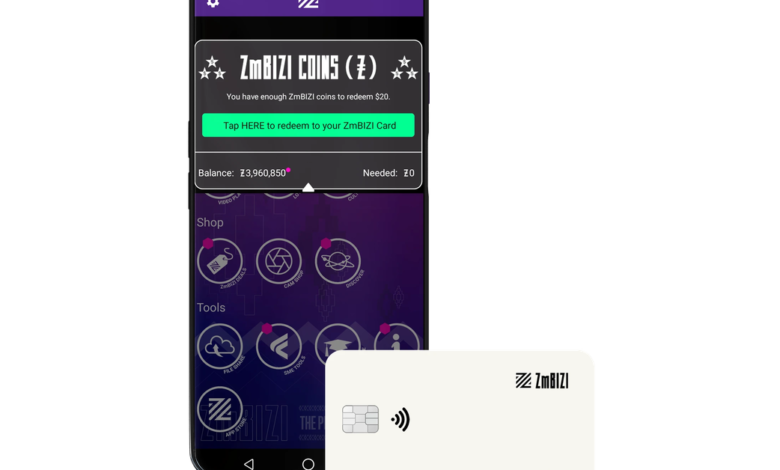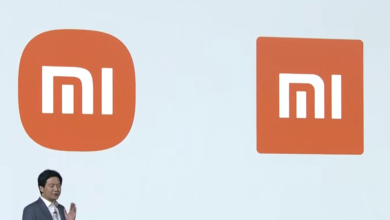ZmBIZI Z2: it pays you for using your data usage

We live so much of our lives on our smartphones these days that our mobile devices are just full of valuable data that we often unknowingly and freely give to all the major tech companies: our spending habits, our personal preferences, our locations, and much more. Since we can’t really live without our phones, and tech companies aren’t going to stop monetizing our data without a fight, we might as well get our cut of the data pie.
That’s the premise of ZmBIZI phones, the LA-based and minority-owned startup backed by the fintech lender Street Cred Capital that is trying to make our phones work for us. Both its new phone, the Z2, and its proprietary software are designed to share the profit that your mobile data generate, back with you.
I spoke with ZmBIZI co-founder Alpesh Patel, the former director of sales at Motorola in Africa and founder of Mi-Fone in Africa, who explained ZmBIZI’s ambitions on both the hardware and software fronts.
ZmBIZI is putting its bets on its new $550 unlocked 4G phone, the Z2. It has a high-resolution, 6.67-inch Full HD+ LCD display (1080 x 2400 pixels; 20:9 aspect ratio), a MediaTek Helio P60 processor, 8GB RAM, and 128GB of storage. The version I saw through a Zoom video call has a glossy fuchsia back cover with transparent cut-outs.
Like many phones these days, the Z2 has multiple cameras on the back. It has a 64-megapixel rear camera, a 16-megapixel wide-angle, 5-megapixel macro, and a 0.3-megapixel photosensitive one. The Z2 is powered by a 4,400mAh battery, has a dual-SIM slot, but has no 3.5mm audio jack. According to PCMag’s research, this phone is likely a rebrand of Cubot X50 with some tweaks. PCMag also notes that it will work best on AT&T’s network, will have limited coverage on T-Mobile, and is unlikely to work at all on Verizon.
Most importantly, the Z2 can accept contactless payments through NFC, which means it can be used as a point-of-sale terminal for someone running a food truck without additional hardware, for example. This is actually the first phone Visa has partnered with to pilot its Tap to Phone program in America. This means customers can just tap their existing forms of payment (card or Apple or Google Pay) rather than download a third-party app like Venmo to pay or use a card swiping dongle from Square.
:no_upscale()/cdn.vox-cdn.com/uploads/chorus_asset/file/22928858/ZmBIZI_Z2_back.jpg)
The main selling point of this phone is that you can earn ZmBIZI Coins by using partnered apps or doing organic smartphone tasks on the Z2. It’s similar to using cash-back websites like Rakuten to shop, where you get money back by buying at their partnered retailers. Each ZmBIZI coin is equivalent to $0.01 USD, and when you’ve accumulated at least $20 USD, then you can move your coins onto a digital Visa debit card preloaded on the phone, which enables you to use that money in the real world.
The website and press materials claim you can make an average of $10 per month from the Z2, but that number feels very optimistic. Patel explained the payment scheme this way: when you buy something with your credit card on your phone, the retailer will share a fraction of the 3.5-percentage processing fee with ZmBIZI, and ZmBIZI will share 1/5 of that amount, evenly divided by the number of its users. This is the amount you can expect. Perhaps other things you do on the phone, such as viewing ads, will offer bigger payouts, but it’s hard to tell over a short Zoom call with limited app demonstrations.
Based on what I could see over Zoom and the company’s website, the Z2 homescreen has a circular launcher that ZmBIZI plans to serve custom ads to its users, so they can watch and get paid. This feature is more of a concept rather than a reality at the moment.
The Z2’s list of curated apps with rewards is long and often strange; you can see the complete list by hovering your mouse over different app icons on its website. For example, you can get paid by doing something very simple, like using Yahoo Search rather than Google to search the web, because they have a paid partnership. There’s also an aptly named app called Earn Money, which gives you tasks like snap photos around your neighborhood and surveys to complete to earn your rewards. Perhaps you’d prefer the Smilecheck app, where “the more you smile, the more you get paid” — my guess is that you’d be feeding the AI valuable facial recognition information. It’s not clear whether each app will disclose how and where it will be using the information it collects about you.
Some of these coin-earning tasks are essentially asking you, the user, to allow yourself to become a data guinea pig, but I’m not sure the minimal reward will be worthwhile. I used to do Google’s Opinion Rewards surveys for fun until I got bored answering the same few questions, never redeemed my Google Play points, and have since lost track of my account. With the Z2, I guess even if you stop participating in the data collection, you’ll still be able to use the $550 Z2 as a fully functioning phone.
Who knows if the company will be able to realize its vision of paying its users for their data usage or if the startup will just fold. Back in 2017, the FreedomPop V7 phone in Europe had promised a “free mobile plan for life,” but it offered such low data limits (200 megabytes) that made the company pivot its strategy again. Or the Saygus company that raised money in 2006 for a new phone that was never made and ended up defrauding investors.
If you don’t mind taking a bet on ZmBIZI, you can pre-order the unlocked ZmBIZI Z2 directly from its website now (the phone should be available for sale by November 2021).
Source link




